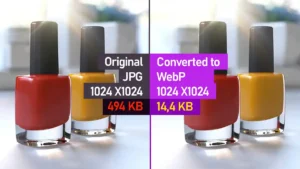How to Recover from Burnout for Creatives and Tech Professionals
 Crédito: Mizuno K / Pexels
Crédito: Mizuno K / Pexels Do you feel like your creativity has dried up? Maybe you’re pushing yourself to be productive but feel increasingly drained. If so, you might be suffering from burnout without even realizing it. Working long hours without rest, feeling unmotivated by tasks that once brought you joy, or constantly worrying about deadlines are signs that should not be ignored. Recovering from burnout is crucial for maintaining your mental health and quality of life.
Creatives and tech professionals are particularly vulnerable to burnout. These individuals often deal with abstract tasks and face pressure to innovate, which can lead to deep exhaustion. If you relate to these symptoms, this article will help you understand what burnout is, recognize its symptoms, and most importantly, provide practical strategies for recovery.
What is Burnout?
Burnout is a state of emotional, physical, and mental exhaustion caused by prolonged stress. It can manifest in different ways, depending on the person and the situation. Creatives and tech professionals are frequently exposed to high levels of stress due to the nature of their work, which demands continuous creativity and innovation.
Often, burnout begins subtly. You may start to feel that small tasks become incredibly difficult to accomplish. You might feel constantly tired, even after a good night’s sleep. Additionally, a sense of cynicism or detachment towards your work may arise.
Gradually, these feelings can intensify, affecting not only your job performance but also your personal life. If left untreated, burnout can lead to more serious health issues, such as depression and anxiety. Therefore, it is essential to recognize the signs of burnout and seek ways to recover.
Signs That You Have Burnout
Recognizing the signs of burnout is the first step to recovery. Some of the most common burnout symptoms include:
- Physical and mental exhaustion: You feel tired all the time, even after resting.
- Lack of motivation: Tasks that were once exciting now seem like a burden.
- Cynicism and detachment: You begin to feel disconnected from your work, as if it no longer has meaning.
- Reduced effectiveness: Productivity drops, along with your self-confidence.
If you’re experiencing these symptoms, it may be time to take a step back and assess your situation. Ignoring these signs will only make the problem worse, making recovery more difficult.
How to Recover from Burnout
Recovering from burnout doesn’t happen overnight, but it is possible with the right strategies. Here are some tips to get started:
- Acknowledge the problem: The first step to overcoming burnout is admitting that you’re exhausted. Denying the problem only prolongs the suffering.
- Take time for yourself: Take breaks, even short ones, to disconnect completely from work. This allows your mind and body to recover.
- Seek support: Talk to friends, family, or a mental health professional. Sharing your feelings can lighten the load you’re carrying.
- Adopt healthy habits: Physical exercise, a balanced diet, and relaxation practices like meditation can help reduce stress.
Everyone has a different recovery pace, and it’s important to respect your own. Forcing yourself to return to work before you’re truly ready can lead to a relapse.
Tools to Prevent Burnout
In addition to knowing how to recover from burnout, it’s crucial to learn how to prevent it. Some practices can help keep burnout at bay:
- Set clear boundaries: Learn to say no to tasks that are not essential or exceed your capacity.
- Take regular breaks: During work, take small breaks to rest your mind.
- Organize your time: Plan your activities to avoid overload. Delegate tasks when possible.
Adopting these practices can help keep burnout at a distance, allowing you to work in a more balanced and healthy way.
A Fresh Start
Recovering from burnout is a process that requires patience and self-compassion. But with the right tools, you can regain control of your life and well-being. The important thing is not to give up and remember that asking for help is a sign of strength, not weakness.
Recommended Video: Enhance Your Resilience
To further support your journey towards recovery from burnout, I recommend watching Harvard’s stress expert on how to be more resilient by Dr. Aditi Nerurkar. In this insightful video, Dr. Nerurkar, a physician from Harvard, explains how you can rewire your brain’s stress response to build a more resilient life. Her expert advice can provide valuable tools for managing stress and preventing burnout in the future.
Frequently Asked Questions
- What does burnout feel like?
Burnout manifests as physical and mental exhaustion, where even the simplest tasks seem difficult. - How do you recover from burnout?
Recovery involves recognizing the problem, taking time for yourself, seeking support, and adopting healthy habits. - What are the five stages of burnout?
The five stages include initial enthusiasm, stagnation, frustration, apathy, and complete exhaustion. - How to deal with burnout?
Set boundaries, take regular breaks, and organize your time to avoid overload.


